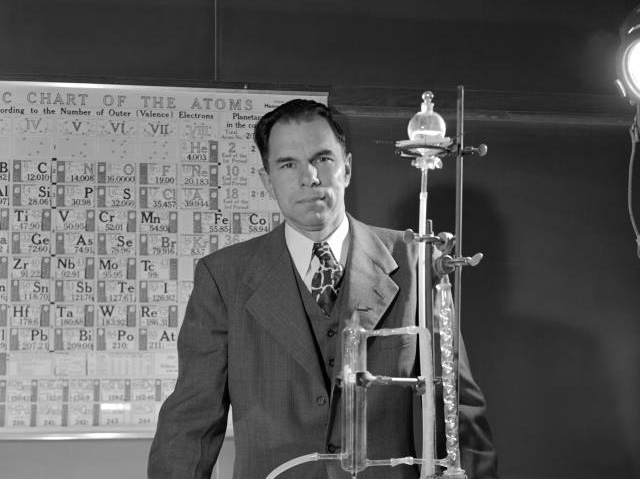The International Union of Pure and Applied Chemistry recently confirmed the discovery of four new elements. These elements, with atomic numbers 113, 115, 117, and 118, will soon be officially named and will complete the seventh row of the periodic table. The newly discovered elements are all extremely unstable, with half-lives ranging from 50 milliseconds to 20 seconds.
In an article for The Conversation, scientist Dr. James Tickner traces the roots of the search for new, heavier elements back to the race for the atomic bomb. In particular, the discovery of plutonium, which was first produced and isolated by Glenn T. Seaborg, Joseph W. Kennedy, Edwin M. McMillan, and Arthur C. Wahl at the University of California, Berkeley, on December 14, 1940, was essential to the success of the Manhattan Project.
As Manhattan Project scientists developed ways to generate plutonium on an unprecedented scale (which Seaborg called “the biggest scale up in the history of chemical engineering”), they also continued the effort to produce new elements. While working at the University of Chicago Metallurgical Laboratory, Seaborg made an important hypothesis: some of these potential new elements must have properties similar to actinium rather than uranium or plutonium.
“We conceived of experiments that made it possible to identify element 96 right away,” he remembered in a rare audio interview, “but we were trying to treat it chemically as if it would behave like uranium and plutonium, and it didn’t. It would not oxidize, in other words. As soon as I got the idea that it shouldn’t, then we used other procedures. This was the key, then, to finding the whole string of transferring elements later after the war.”
After this realization, Seaborg and a group of other Manhattan Project scientists, including McMillan and Albert Ghiorso, synthesized americium and curium in 1944. These discoveries were kept classified until the end of the war. The group then resumed its work at the Radiation Laboratory at Berkeley (today Lawrence Berkeley National Laboratory). Ghiorso ultimately contributed to the discovery of 12 different elements, more than any other scientist.
American and Soviet competition during the Cold War extended to the effort to produce new elements. In the fallout from the test of Ivy Mike, the world’s first hydrogen bomb, American researchers detected two new elements, which they named “einsteinium” and “fermium” in honor of Albert Einstein and Enrico Fermi. For decades, scientists at Berkeley and Russian scientists at the Joint Institute for Nuclear Research (JINR) disputed who had discovered elements 104-106 in the “Transfermium Wars.”
In recent years, researchers have used particle accelerators to produce heavier and heavier elements. Japanese researchers at RIKEN have been credited with discovering element 113. Working in collaboration rather than in competition, American scientists at Lawrence Livermore National Laboratory, Oak Ridge National Laboratory, and Russian scientists at JINR created elements 115, 117, and 118. The search for new elements triggered by the Manhattan Project continues.





